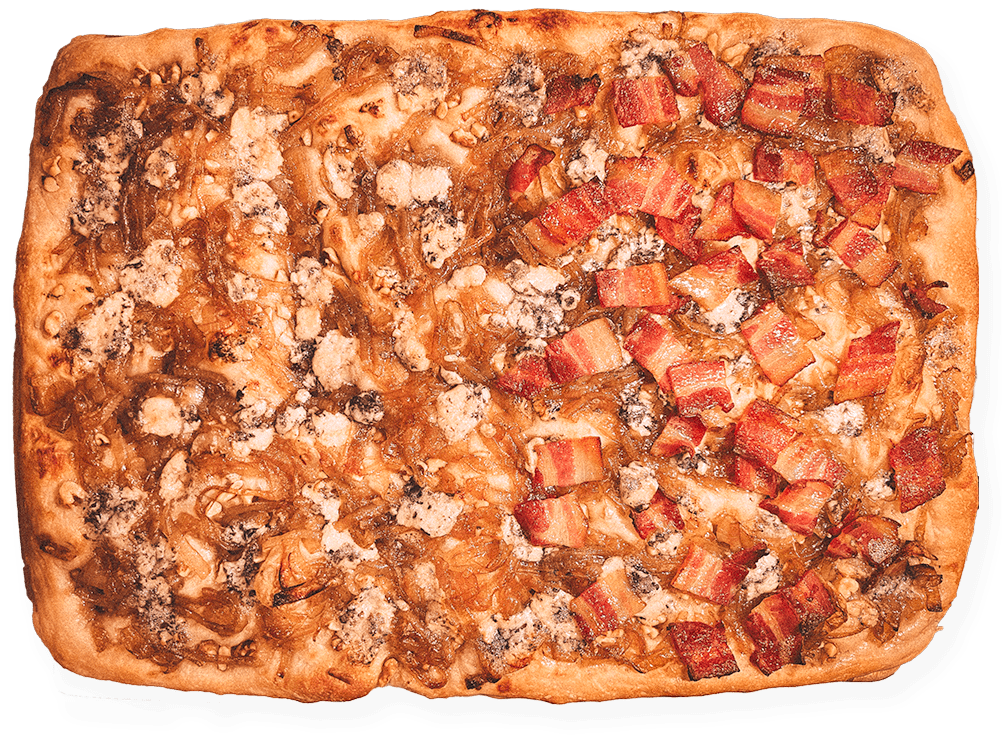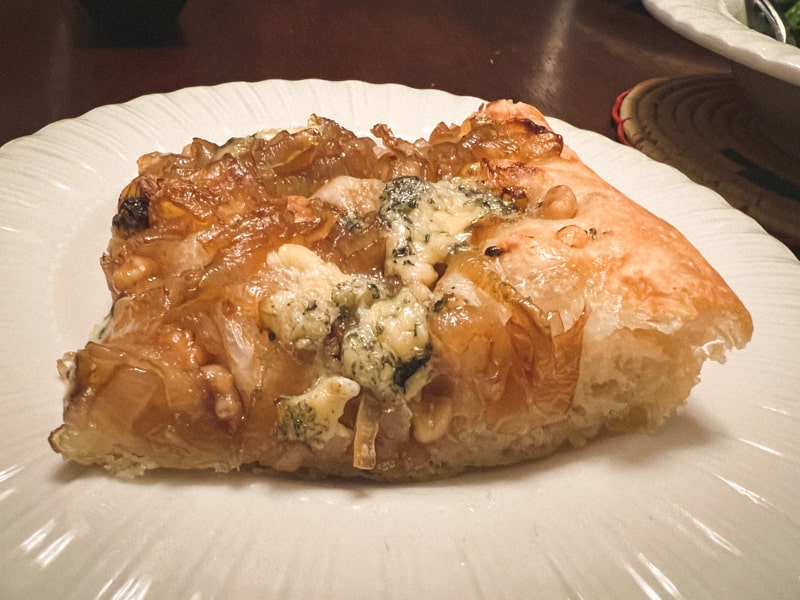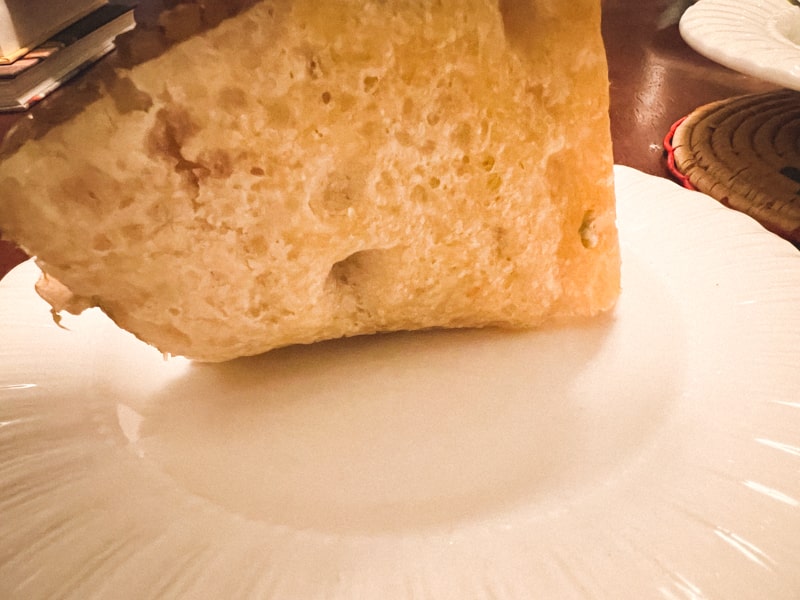Ratings, percentages, and more
rating: 6/8 slices

hydration: 80%

difficulty: challenging

Ingredient percents
| Ingredient | Standard % | Baker’s % |
| Flour (567g) | 54% | 100% |
| Salt (11g) | 1.04% | 1.95% |
| Yeast (4g) | 0.38% | 0.7% |
| Water (454g) | 43.28% | 80% |
| Olive Oil (14g) | 1.33% | 5% |
Summary
- An intriguing topping combo.
- Good but not close to as good as Reinhart’s Detroit-style pizza.
Recipe available in Reinhart’s Book*
*Do I receive compensation for purchases made from links on this site? When I wrote this, the answer was "no." But, that might have changed. See this page for the current answer.

Cooking
I first made this the Sunday before Thanksgiving, November 21st, 2021. I am traveling to Orlando for Thanksgiving, so I’ll probably miss a week of pizza making. This recipe, like the last two I’ve made, is from Peter Reinhart’s book. It turned out much better than last week’s disastrous grandma style pie. This time, the recipe recommended lining the sheet pan with parchment paper. After last week’s issues with the crust adhering to the pan, I would have used parchment paper even if Reinhart did not recommend it. The paper led to an easy to remove pizza, with no sticking.
The crust was nice and light, largely due to the 4-hour in-pan rise I’m guessing. When a crust is as thick as this one, I think a longer rise is critical to get some air in the crust and prevent it from being a dense mass of dough. Unfortunately, the crust did not crisp on the bottom limiting the texture to one soft note.

It tasted, not surprisingly, more like focaccia than pizza. I found the toppings of blue cheese, caramelized onions, and walnuts interesting — not what I normally put on pizza. Reinhart says this topping combo is his “personal favorite and one of the best things I’ve ever eaten.” I think this raised my expectations to unreasonable heights and led to disappointment when I tasted it. Yes — the toppings worked well together but were certainly not the best I’d had, or even the best in the book. In fact, a modification to half the pizza resulted in a better flavored result in my opinion.
Before cooking, I had explained the toppings to my wife. She suggested the need for an additional accent. I had some leftover bacon that I’d cooked for breakfast, so I put that on half the pizza when I removed it to rotate the pan midway through cooking. The bacon definitely improved the pizza, adding a meaty, flavorful element.

While I liked the toppings, the bottom of the crust fell short. It was more like a loaf of bread with the crust removed — no texture-enhancing layer of crisp on the bottom, only a uniform soft breadiness. I even cooked it for an additional 3-4 minutes beyond what the recipe suggested, but it stayed pale and never crisped up. I’m wondering if all the oil put in the bottom of the pan prevented it from browning.
Cold
This pizza is fine cold. The crust is nice and soft, bready. The flavors seem more distinct to me when it’s cold. The blue cheese especially stands out.
Conclusion
I followed this recipe closely with no modifications, aside from the bacon and extra cooking time. Reinhart said it’s a dish he’s known for, so I had high hopes. While it’s good, it paled in comparison the Detroit pizza from the same book. Plus, you need to take significant extra time to caramelize the onions. Overall, this pizza is not worth the effort in my opinion. Mr. Reinhart, did I miss something? If so, please let me know in the comments.
